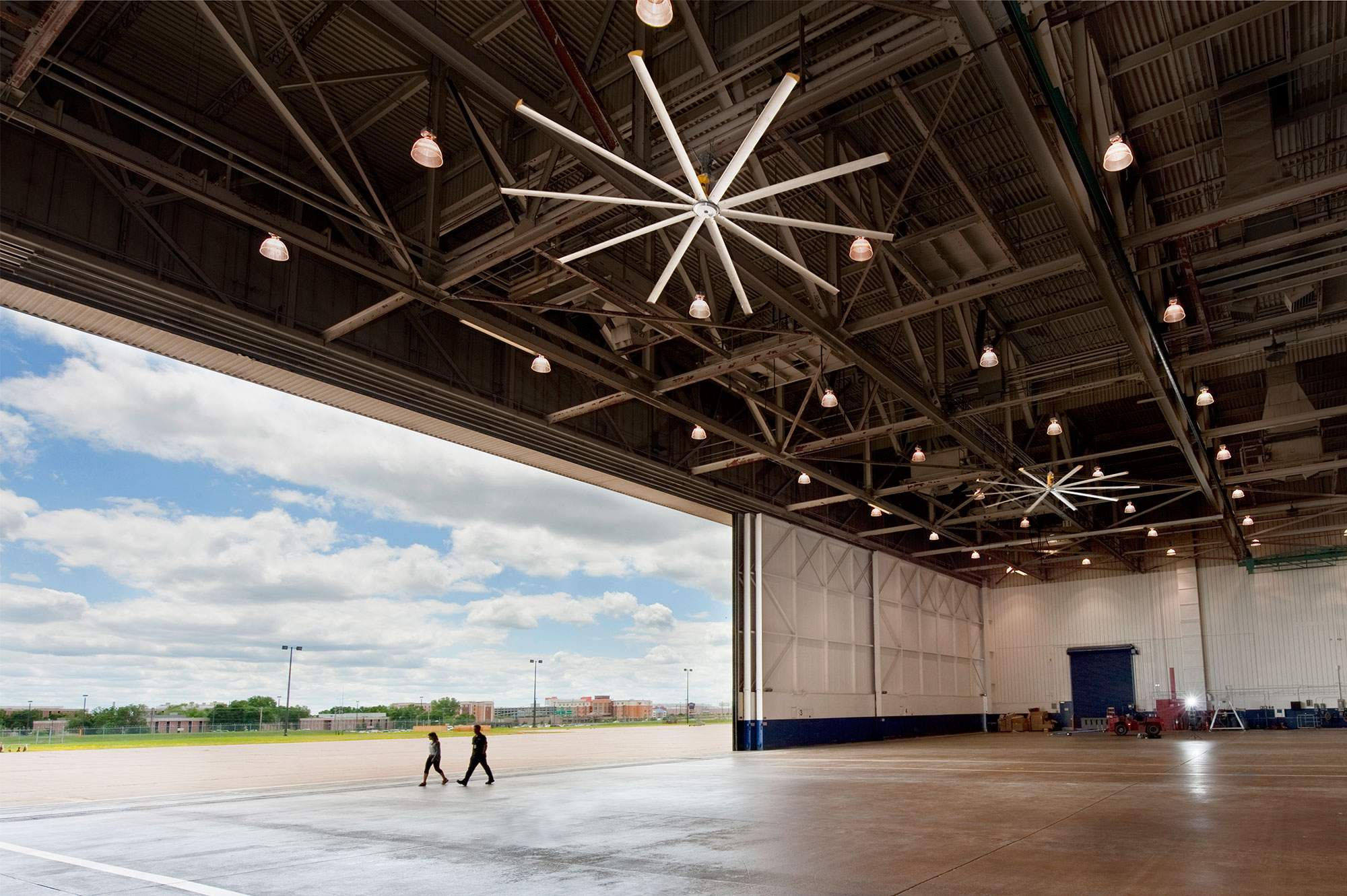Proper ventilation is vital in aircraft hangars to maintain air quality, protect aircraft and equipment, and provide a safe working environment. Industrial fans are crucial in achieving these goals by improving air circulation, controlling temperature and moisture, removing fumes and odors, and ensuring energy efficiency. This article will explore the benefits of industrial fans in aircraft hangars and provide practical steps to implement them effectively.
Benefits of Industrial Fans in Aircraft Hangars

1. Improved Air Circulation
Industrial fans facilitate proper air circulation by preventing stagnant air pockets, ensuring consistent airflow, and reducing the risk of airborne contaminants. Improved air circulation creates a healthier and safer environment for aircraft and personnel.
2. Temperature Control
Maintaining optimal temperatures in aircraft hangars is essential for aircraft maintenance, repairs, and personnel comfort. Industrial fans help distribute conditioned air, reducing temperature variations and creating a more pleasant and productive working environment.
3. Moisture Control
Moisture accumulation can lead to corrosion and damage to aircraft and equipment. Industrial fans aid in moisture control by promoting airflow, preventing condensation, and reducing humidity levels within the hangar.
4. Removal of Fumes and Odors
Aircraft hangars often encounter fumes and odors from fuel, solvents, and maintenance processes. Industrial fans, combined with effective ventilation systems, efficiently remove airborne contaminants, ensuring a healthier and safer working environment for personnel.
5. Energy Efficiency
Industrial fans designed for aircraft hangars prioritize energy efficiency without compromising performance. Their engineering focuses on optimizing airflow while minimizing energy consumption, reducing operational costs and environmental impact.
Implementing Industrial Fans in Aircraft Hangars

1. Determine the Hangar Size and Ventilation Requirements
Assess the hangar's size and consider the specific ventilation needs based on factors like the number of aircraft, activities conducted, and potential sources of fumes or odors.
2. Choose the Appropriate fan Type and Size
Select industrial fans designed explicitly for aircraft hangars. Consider factors such as fan type (ceiling-mounted or wall-mounted), fan size, airflow capacity, noise level, and energy efficiency to meet the hangar's unique needs.
3. Consider the Fan Placement and Airflow Patterns
Strategically position industrial fans to achieve optimal distribution throughout the hangar. Evaluate the hangar's layout, identify potential obstructions, and plan for desired airflow patterns to maximize the fans' effectiveness.
4. Ensure Proper Maintenance and Regular Inspections
Establish a maintenance routine to ensure the longevity and functionality of industrial fans. Regularly clean or replace filters, inspect fans for damage or malfunction, and schedule routine maintenance to keep them in optimal condition.
Pros
- Reduce moisture buildup, helping prevent rust and corrosion on aircraft surfaces.
- Lower energy costs by supporting HVAC systems and reducing the need for full-time air conditioning.
- Enhance comfort and safety for maintenance crews working in hot or stuffy conditions.
- Improve air circulation to maintain uniform temperature throughout large hangar spaces.
Cons
- Initial installation cost of large industrial fans can be high.
- Can create noise that may interfere with communication or cause discomfort.
Conclusion
Industrial fans offer benefits in aircraft hangars, including improved air circulation, temperature control, moisture control, fume and odor removal, and energy efficiency. By implementing the suggested steps and choosing the right industrial fans for the hangar, operators can enhance air quality, protect aircraft and equipment, and create a secure and more productive working environment.
